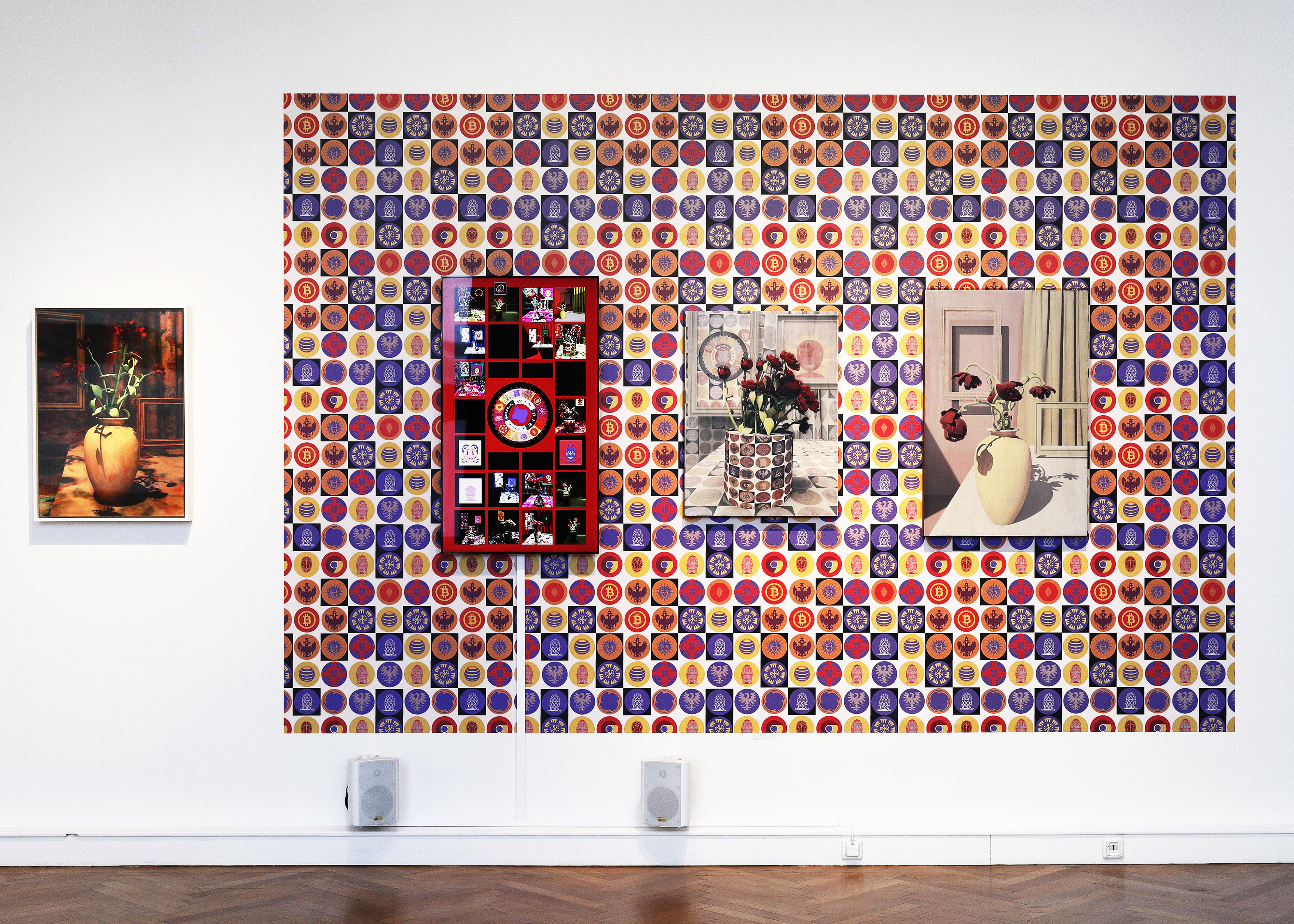Still Lives: Decay, Decadence, Memento Mori


The exploration of transience plays a central role in Hart's work, including the elaborate process used to create her still lifes. Her historical paintings are first meticulously recreated as 3D simulations, then printed on wood and painted by hand over several layers of hand-sanded paintings. These so-called “ghost images" embody time, history and loss.
The Armory Women series remixes Post-Impressionist and Fauvist paintings by seven forgotten women painters exhibited at the international New York Armory Show of 1913: Marion H. Beckett, Marie Bracquemond, Emilie Charmy, Marjorie Organ Henri, Marie Laurencin, Jacqueline Marvel and Katharine Rhoades.
Russian Roulette integrates the Baroque memento-mori motif into a contemporary game of chance. Originally planned as an NFT game, the release of which fell victim to the crypto winter of 2023, the artist transformed this interactive work into a series of paintings and a 15-minute animation that stages the game as a play. Hart's Queen Elizabeth Bot acts as an ironic croupier amidst the garish Las Vegas aesthetics of vanquished empires.

Claudia Hart's work The Ruins is a cross-media archive in which she transforms works from the digital to the analog and back again. Still Life With Flowers by Henri Fantin-
Latour is a copy of a copy of a copy that deals with decay and obsolescence. To make it, Hart created a computer model in careful imitation of the 1881 original, and then transformed it into physical form using a CNC milling machine and rapid prototype printer, before re-transforming it into a reduced polygon model for the animation The Ruins.

I returned to painting during the Covid lockdown in 2020‐21 after meeting master‐printer Cody Renaldo who runs the Color Center in Brooklyn. Renaldo had just purchased ‐ what was at that time ‐ a rare and very technically advanced computer‐controlled “UV” printer that sprays pure pigment. During the quarantine, we developed Ghost Paintings, my return to the art form after a 15‐year hiatus. Since then I have painted three bodies of work, including The Ruins, Russian Roulette and Armory Women. Ghosts combine the hand‐made with computer simulations, a form of computer graphics using coded visualization data accumulated in the natural sciences, made to reconstruct an accurate scientific model of the natural world by calculating the impact of physical forces such as gravity or wind, the mathematics of light, gasses and the measurable properties of real materials such as oak or granite.
These calculations are tabulated by complex 3D software. Mine is Maya by Autodesk, and I use it to make computer images that visualize in representational form a mathematical Cartesian space using the same technology used by scientists and engineers who visualize the impact of disease on the body, stress on a bridge, the workings of subatomic particles, or the outcome of nuclear war. These pictures are then applied as a fine spray of pure pigment to wood panels that I have hand painted using gouache, Bombay ink and an array of traditional materials.